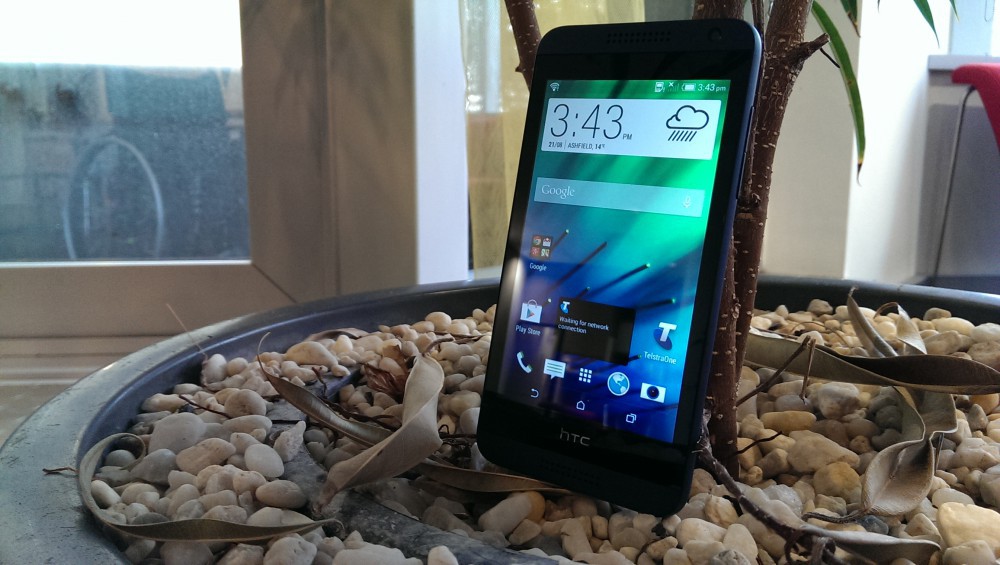
Since launching as their ‘Premiere’ device, the HTC Desire fell on some hard times. HTC resurrected the brand as a low-mid range series of devices, capitalising on the inherrent good will towards the brand name. HTC has been outsourcing production of the Desire series of phones to save costs recently, which has led to them seeing a financial resurgence. We’ve previously enjoyed a number of Desire phones and the latest to launch in Australia is the Desire 610.
Recently launched as a mid-range 4G/LTE device exclusive to Telstra on their 4G network, the HTC Desire 610 continues the Taiwanese companies move into the mid & budget range of smartphones.
As a Telstra exclusive, it can be purchased outright from Australia’s largest carrier for just $312, but if you’re keen you can jump on a range of plans from $55 per month and above with no handset repayments. It’s also available from a range of importers like Kogan for $249$319, or Yatango Mobile from $299.95.
The Desire 610 comes with the basic accessories – a 240v/200 mAh charger base, MicroUSB lead, and headset.
Though it’s got some fairly mid-range specs, let’s take a look.
- Camera is quite good for a non-ultra pixel camera
- Great performance
- HTC Blinkfeed integration
- Boomsound stereo speakers leave a lot to be desired for
- Price for the Desire 610 is overpriced slightly
- Battery life isn’t as great as HTC’s flagship One series
Hardware
In terms of hardware, this is where you begin to notice where corners have been cut to keep the price down overall. For example, while the HTC Desire 610 is still a very capable device for the market HTC are aiming for, there have been some cost savings by using the lower end of the range components.
The Desire 610 includes a 1.2 GHz CPU quad core Qualcomm Snapdragon 400 with 1GB RAM under the hood, a configuration which has become the defacto standard in mid range smart phones.
The screen which looks OK, does tend to get a little smudgy after a while with fingerprint marks and certainly in the outdoor daylight it does make the screen unbearable to view if not cleaned.
HTC have also decided to do away from the ultra pixel camera for the Desire 610, instead opting for a more standard 8MP camera sensor. Though not top of the line, it allows the Desire 610 to take a decent picture on a mid-range phone. The LED flash light at the back also is quite strong but doesn’t overpower and still allows for a descent photo in low light situations.
The front facing speakers are a welcome addition, although they aren’t as refined in style compared to the HTC One M8. However the front facing speakers do leave a lot to be desired when it comes to quality and power, we’ll get to that later on.
Build
At first glance, the Desire 610 doesn’t look any different to the HTC flagship One series, but leans more towards the Desire 816 when it comes to the visual styling. The Desire 610 still has some of the finesse of the HTC One series, but just scaled down to suit the Desire line of phones.
In the hand, the phone feels quite solid and light, though the edge of the screen along the sides of the device could have done a little smoothing or rounding off around the edge at least.
The sides of the device seem to be made from a matte finish which is interesting but also pleasing in the hand. the matte finish on the sides does help to provide a sturdy grip compared to the polished back on other phones which could easily slip past your fingers.
The Desire 610 has rounded corners, with a mostly flat back that curves around at the side towards the bottom of the device, rather than the arched back we have come to see with the One M8.
Sadly there is a thick, black bezel that surrounds the display, which doesn’t help at all with the overall design nor experience, but it’s something you can live with. The border does tend to lend a certain ‘squashed in’ look which re-enforces that the phone is a budget device, rather than a flagship.
With no removable battery, HTC has hidden the microSIM and microSD card slots underneath a plastic flap on the left hand side. On the bottom of the phone is the micro-USB port, with the 3.5mm headphone jack located on the top left-hand side and power button located on the top right hand side.
Located on the rear of the Desire 610 is the LED Flash, with the 8MP Camera located in the middle top half. Just below this is the HTC branding located right in the middle rear of the device.
The front of the device also includes HTC’s front facing speakers which are becoming the standard for HTC and are a welcome addition to the device when it comes to playing music or watching a movie or YouTube.
Screen
The HTC Desire 610 offers a 4.7-inch display with a 960×540-pixel resolution, offering a relatively low pixel density of 234 pixels per inch (ppi), it’s neither here nor there.
Because of this of the low resolution and pixel density the Desire 610 screen isn’t very crisp. The icon edges and text don’t have the same clarity at the end of the day which again is disappointing but manageable. It’s somewhat disappointing after using some other mid-range devices like the Moto G which offers a 720p resolution, with a higher pixel density at 326ppi at a similar price.
As mentioned previously the Desire 610 includes quite a large border around the screen, including the now notorious black HTC bar beneath the display. The screen seems to be somewhat squashed into the space, although there appears to be an over-abundance of internal space in the device with that extra border. Still, we don’t know what’s underneath the screen so it may not be totally unused.
The screen which looks and works ok in low light, but it does tend to get a little smudgy after a while with fingerprint marks. This just means that fingerprints are very visible and the phone needs to be cleaned before using it in the harsh outdoor light it does make it almost unbearable if not cleaned.
Connectivity
Obviously the Desire 610 works on Telstra’s 4G network, offering a wide range of LTE bands on the phone. HTC Australia advises that the phone is compatible with the 700/900/1800/2100/2600 MHz LTE bands, which should make it compatible with the Optus 4G Plus as well as the Vodafone LTE network (the 1800MHz network anyway). The addition of the 700MHz band should also see you ok on the new Telstra 700MHz network which is slowly entering testing in various markets before a full launch in January next year.
The Desire 610 does also offer HD voice calling which is pretty clear and its good to see this carried down to mid range devices nowadays.
WiFi connectivity as you expect is pretty much the standard we have come to see in new devices. WiFi connectivity is based on IEEE 802.11 b/g/n (2.4GHz).
The Desire 610 also comes with Bluetooth v4.0 along with A-GPS and an FM Radio as standard with most mid range devices.
Battery
The Desire 610 comes with a 2040mAh non-removable battery which can last a full 2 days at absolute minimum usage, however that’s not how most people will use the phone. If you spend a large portion of your time using the smartphone for watching video, browsing the web and more, it lasts closer to a single day.
Like the higher end phones in the One series, HTC have given the Desire 610 both a power saving and an extreme power saving mode if you’re running really low on juice. With the power saving mode on, I did notice that the Desire 610 could still have about 30% battery life at the end of a long days use or about 15%-20% if you’re a heavy user.
The Desire 610 was able to charge quite fast within an hour, but this did depending on what percentage the battery was at. The maximum time to charge from about 10% was about an hour to an hour and a half.
Performance
The Desire 610 comes with an 1.2Ghz quad-core Snapdragon 400 and 1GB RAM backing it up. While it’s no top of the line processor, it does have a generally good overall performance. Launching apps and playing games was fairly decent.
I did find that navigation around the Desire 610’s Sense 6 interface was for the most part swift and lag-free which enabled me to play some more 3D intensive racing games like Need For Speed: Most Wanted which loaded and ran quite smoothly.
Opening the camera app was fast too from the main menu, and shot-to-shot time within auto mode was speedy, although there was few seconds delay in HDR rendering, which is present in most phones.
The smooth performance was also reflected in the Benchmarks we ran through. The Desire 610 scored 1,317 on the Geekbench 2 benchmark test, which isn’t expected for a mid-range phone and generally indicative of its overall performance.
Sound
Though coming with BoomSound speakers, sadly, this is where HTC have cut some corners to obviously keep the price down overall. In a comparison test using the HTC One (M7), the Desire 610 simply cannot provide the same quality of sound its flagship older brother can. This could simply because the device does not provide the same Beats Audio software but still it is a little disappointing. Sound is still audible but the clarity just isn’t there sadly.
Maybe I am being a little unfair but I do feel that given HTC are advertising the front facing speakers as a feature, I would have liked to have seen a more enriched experience to what I got with the Desire 610.
Camera
The Desire 610 comes with an 8MP camera on the rear of the device, it’s not a top end sensor but certainly a little higher in overall resolution than the Ultra-Pixel camera on the HTC One series. It’s nowhere near as good in low-light, but overall it’s a good fit for the price and market HTC are aiming for with this phone.
In well lit conditions or at least daylight in general, the 8MP camera when testing it around Sydney did very well. Colours are accurate and it captures enough detail of various buildings in various distances, such as the QVB in the heart of the city.
LED flash on the Desire 610’s camera is ok if you need to use it, but I did find the flash tend to give off either too much or too little light. That said it is a lot better than the LED flash on the Desire 816 which Jason recently also reviewed.
I did try out Google’s own Camera App and found results did vary when compared to the main HTC camera app on the Desire 610. Close ups where pretty decent in HTC’s own camera app when compared to the Google’s own camera app.
The stock HTC camera does come with various settings like auto, night scene, HDR, panorama, anti-shake, portrait, landscape, backlight, text and macro. You do get manual control over ISO (200, 400, 800 and 1600) along with exposure (-2 to +2 in 0.5 increments). There is also a number of preset filters you can apply to your photo in real-time and there’s configuration for things like an on-screen grid, post-capture review time and functionality assigned to the volume keys.
The front-facing camera or selfie-cam (if you’re into that) is good for video calls or the occasional duck-face At 1.3MP it’s not terribly high-resolution, but it is capable of 720p video recording if the need arises.
Software
The Desire 610 is running Android Android 4.4.2 straight out of the box, though an update did come through for Android 4.4.3 within minutes of turning on and setting up the device.
The HTC apps are colour coded which helps if you’re looking for a certain stock app (such as the photo gallery app), however they can be drowned out once you start installing third party apps which can have quite brightly coloured app icons and really don’t add to the experience, but are a nice touch nonetheless.
Sense 6 is relatively unobtrusive and is still differentiated from stock Android in a number of ways. For example, the dialler and contacts are similar in style to that used by HTC for some years although the design has been refined over time, but it’s still quite recongisable as a HTC app.
HTC has done an extremely good job with ensuring the home screen is easy to customise and fast to use. The lock screen too has the simplified with four app shortcuts which pretty much mirrors what is available on the dock of the home screen.
One issue I did have was the HTC Sense keyboard which is found absolutely frustrating to use and very quickly decided to download the Google keyboard, although that’s purely personal preference as other third-party keyboards work perfectly fine.
The Desire 610 performs excellently well from a general perspective and is fairly well cohesive in its design and overall user experience.
HTC Desire 610
- 2G/ 2.5G – GSM/GPRS/EDGE: 850/900/1800/1900 MHz
- 3G/3.5G – WCDMA: 850/900/2100 MHz with HSPA+ up to 42 Mbps
- 4G – LTE: 700/900/1800/2100/2600 MHz
- Dimensions: 143.1 x 70.5 x 9.6mm @ 143.5g
The HTC Desire 610 is a capable device and powerful enough to get through the day without compromising on speed or performance. However without the further refinements around the screen display, the speakers and the build quality, I feel this device will just remain in the shadows and in all honesty without a price reduction will struggle to sell. This is simply because for about $50 less, you can pick up a Moto G 4G that offer some premium specs with a lower price tag.
I know it might be harsh and don’t get me wrong, the HTC Desire 610 is a very capable device for the everyday user, but if you’re on an absolute budget, then there are cheaper options with similar, if not better specs..
That said the Desire 610 is a nice device, eye pleasing from a construction and design perspective along with providing some decent specs from a technical perspective but from a price and user experience, it certainly does lack fanfare when compared with it competitors.



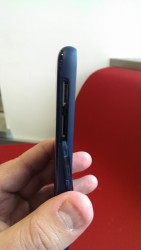
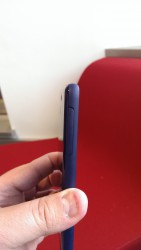

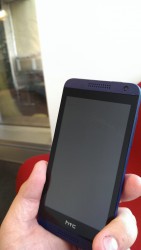
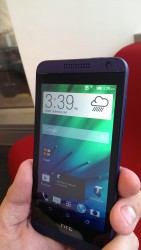
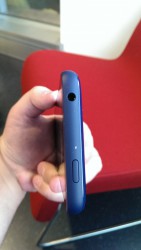
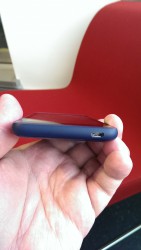
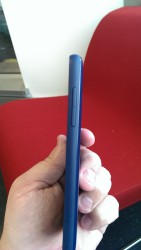
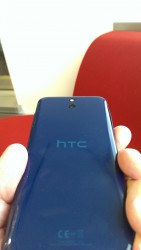

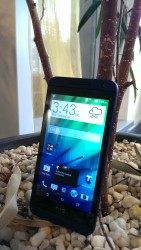






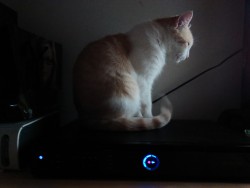



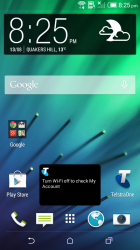


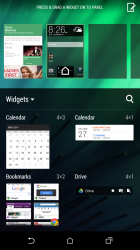
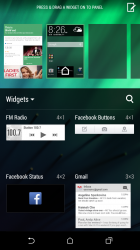
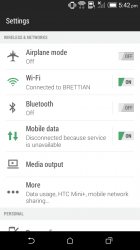
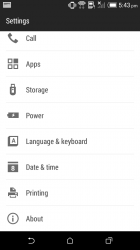




Hopefully it comes with a 2000 mAh charger, not a 200mAh one, since that’d take forever to charge!
The Desire 610 has some of the best build quality and arguably the best software available at this price as well as a smooth and fluid interface, but that isn’t enough in the end to make it a truly compelling device.
Its compelling if you’re on a budget but I suggest weighing up the other options available. Its a good device, just a little bit of a hard sell given the outright price at Telstra and even JB HiFi have the Desire 610 for $312 but Yatango and Kogan are offering some really good deals. Given the next Nexus is just around the corner announcement wise, it will be a hard sell
And now that Kogan have caught the headlines, you’ll now find the HTC Desire 610 listed at $319, not the $249 referenced in this article.
They’re quick. Fixed.
And the Moto G 4G is NOT the 2nd gen device. You can either get Moto G 1st Gen, Moto G 4G 1st Gen, or Moto G 2nd gen (no 4G).
This is valid, have updated the conclusion to reflect that Alex was refering to the Moto G 4G.
I do apologise, I did get a little confused because of the branding
If the Moto G 2nd gen gets a 4G variant with microSDXC, at a sane price, then it’ll basically be game over for the HTC Desire 610.